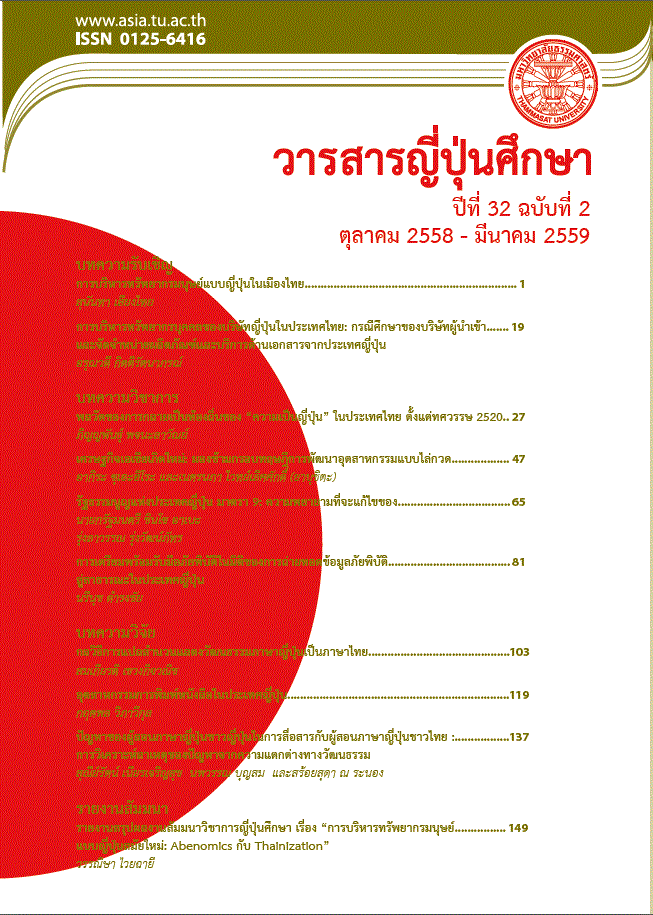กลวิธีการแปลส????ำนวนแสดงวัฒนธรรมภาษาญี่ปุ่นเป็นภาษาไทย
บทคัดย่อ
This paper examines the translation strategies used in translating Japanese cultural expressions into Thai, by analysing the data from general documents, i.e. various types of articles in newsletters and translated books. Nine translation strategies are found, those used most frequently being literal translation and direct translation (transliteration) strategies.
The study attempts to analyse WHEN the strategies are used (for example, the direct translation strategy is often used to translate the proper names of places or persons) and HOW the strategies are used concretely (for example, regarding the adding explanations translation strategy (adding explanations to the word translated by the direct translation strategy), how and what kind of explanations are added). Also, the problems of employing the strategies are investigated (for example, the direct translation strategy is not appropriate when the words in the source language contain some connotation or meaning that is important for the readers to understand the text, or the cultural substitution strategy may lead to the wrong meaning or images.) It is hoped that the results found will be useful to improve the quality of Japanese --- Thai translation.




